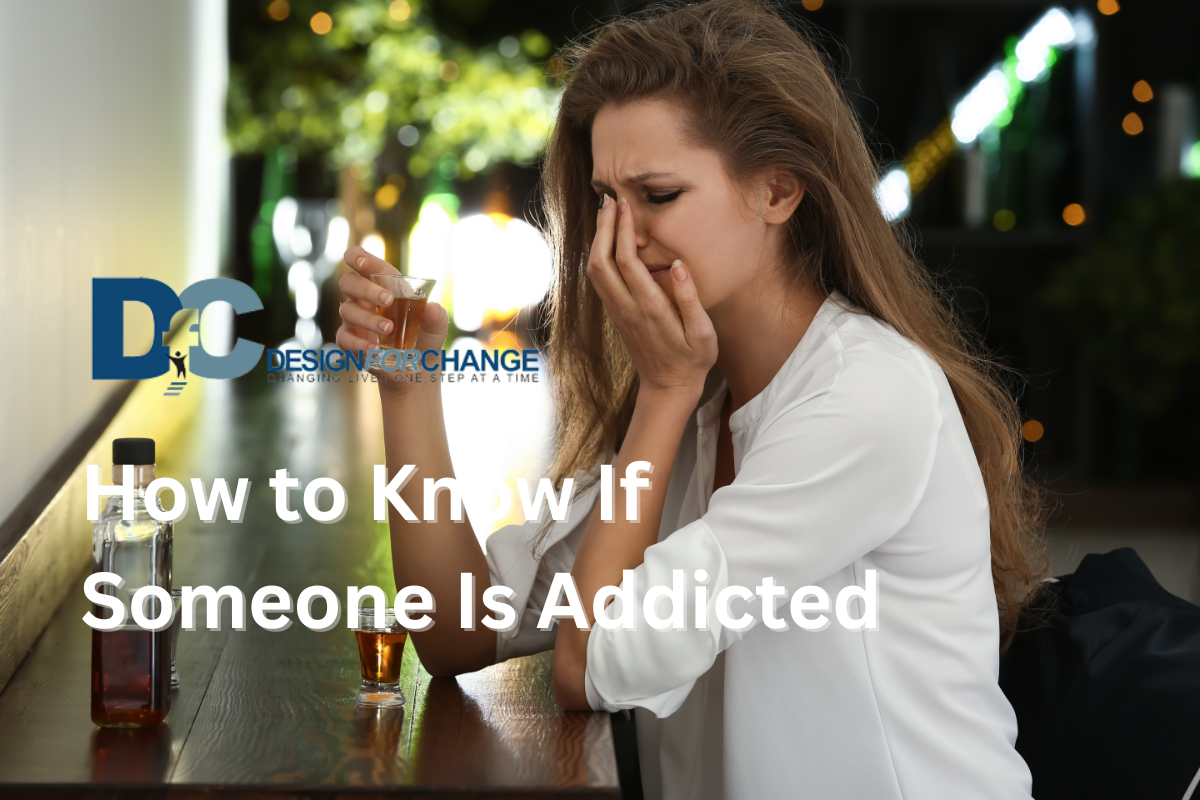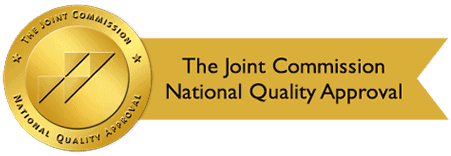By: Design for Change Recovery
Categories:
How to Know If Someone Is Addicted: Physical, Behavioral & Mental Signs
You are here:For families and loved ones seeking clarity—written by the team at Design for Change Recovery in Lancaster, California.
If you’re worried about a friend or family member, you’re not alone. Addiction often hides in plain sight—especially early on—because its signs can look like stress, burnout, or ordinary life changes. Recognizing the patterns early can open a compassionate path to help. This guide explains the most common physical, behavioral, and mental signs of addiction, plus substance-specific red flags and what you can do now to support your loved one in California.
Why Recognizing Addiction Early Matters
The sooner a substance use problem is identified, the easier it is to treat. Early intervention can reduce medical risks, prevent legal or financial fallout, and shorten the time a person spends suffering. It also helps families move from fear and guesswork to a practical plan rooted in care and evidence-based treatment.
Physical Signs of Addiction
While no single sign proves addiction, clusters of changes can suggest a problem:
- Changes in pupils: pinpoint pupils (often with opioids) or dilated pupils (often with stimulants).
- Unexplained weight loss or gain: especially rapid shifts without diet or medical explanation.
- Frequent nosebleeds or nasal irritation: possible sign of snorted substances (e.g., cocaine).
- Track marks, bruising, or infections: possible injection drug use.
- Chronic cough or respiratory issues: linked to smoked substances.
- Sleep pattern disruption: extreme fatigue (sedatives/opioids) or insomnia (stimulants).
- Poor hygiene or “run down” appearance: especially if this is a change from baseline.
Substance-Specific Physical Red Flags
- Opioids (heroin, fentanyl, pain pills): constricted pupils, itching, constipation, “nodding off.” Learn more about
Heroin Addiction,
Opiate Addictions, and
Fentanyl Addiction. - Stimulants (methamphetamine, cocaine): dilated pupils, jaw clenching, weight loss, skin picking, sores. See
Meth Addiction,
Cocaine Addiction, and
Stimulant Addiction. - Alcohol: flushed face, tremors, bloodshot eyes, GI issues, sleep disruption. See
Alcoholism. - Benzodiazepines (Xanax, Valium): slurred speech, coordination issues, excessive sleepiness. See
Benzodiazepine Addictions. - Marijuana: red eyes, increased appetite, lack of motivation, memory lapses. See
Marijuana Addiction. - Hallucinogens: sensory distortions, unsteady gait, anxiety/panic episodes. See
Hallucinogen Addictions. - Inhalants: chemical odors, paint/solvent residue, headaches, nose/mouth irritation. See
Inhalant Addictions. - Synthetic/other: club drugs, steroids, or xylazine can cause unique physical harms; see
Club Drug Addictions,
Steroid Addictions, and
Xylazine.
Behavioral & Habit Changes
Substance use disorders affect priorities, routines, and relationships. Watch for:
- Secretiveness or defensiveness: hiding whereabouts, lying about plans, avoiding eye contact when questioned.
- Social withdrawal: losing interest in activities or isolating from family and friends.
- Work or school decline: missed deadlines, absences, disciplinary actions.
- Financial problems: borrowing money, missing bills, selling personal items.
- Legal issues or risky behavior: DUIs, public intoxication, fights, unsafe sex.
- Paraphernalia: small baggies, burnt foil, straws, syringes, pill bottles without labels.
- Compulsive patterns: fixed routines around obtaining/using, restless if routine is disrupted.
Mental & Emotional Changes
Addiction doesn’t only affect the body; it also impacts mood, cognition, and relationships. Consider the person’s baseline—are the following changes new or intensifying?
- Mood swings & irritability: short temper, volatile reactions, or unusual apathy.
- Anxiety & panic: racing thoughts, restlessness, suspiciousness.
- Depression: sadness, hopelessness, sleeping too much or too little.
- Paranoia & confusion: especially with stimulant or hallucinogen use.
- Memory problems: missed appointments, repeating stories, losing items.
- Loss of insight: minimizing harm, denying consequences, blame shifting.
Substance-Specific Mental Changes
- Opioids: sedation, slowed thinking, detachment from responsibilities (Heroin, Opiates, Fentanyl).
- Stimulants: euphoria → agitation, insomnia, suspicion, possible psychosis (Meth, Cocaine, Stimulants).
- Alcohol: irritability, depression, defensiveness, blackouts (Alcoholism).
- Benzodiazepines: memory gaps, impaired judgment, rebound anxiety (Benzodiazepines).
- Hallucinogens/Marijuana: altered perception, anxiety, panic, motivational decline (Hallucinogens, Marijuana).
- Antidepressants (misuse): taking without prescription or mixing with alcohol/benzos can destabilize mood (Antidepressants).
Types of Drugs & Their Unique Signs (With Resources)
Each substance can present differently. Use these guides to dig deeper:
- Alcohol — blackouts, tolerance, morning relief drinking.
- Heroin — nodding, itching, constipation, track marks.
- Fentanyl — sudden sedation, pinpoint pupils, respiratory depression.
- Opiates (Rx) — escalating pill counts, doctor shopping, withdrawal between doses.
- Methamphetamine — insomnia, rapid weight loss, skin picking, paranoia.
- Cocaine — short bursts of energy, nosebleeds, mood crashes.
- Stimulants (general) — appetite loss, jaw tension, anxiety.
- Benzodiazepines — slurred speech, falls, memory gaps.
- Antidepressants (misuse) — risky mixing, emotional blunting.
- Marijuana — red eyes, motivation drop, memory issues.
- Hallucinogens — sensory changes, panic, poor coordination.
- Inhalants — chemical odors, rashes around mouth/nose, dizziness.
- Club Drugs — dehydration, memory gaps, next-day crash.
- Steroids — mood swings (“roid rage”), acne, hormonal changes.
- Xylazine — deep sedation, difficult-to-heal wounds when used with opioids.
- Behavioral Addictions — compulsive gambling/gaming/shopping with life consequences.
When It’s Not “Just a Phase”
People with addiction often promise to cut back or quit “soon,” but struggle to stick with it. Addiction is a medical condition—not a moral failing. If your loved one can’t cut down despite mounting consequences, it’s time to consider professional support.
What To Do If You Notice These Signs
- Prioritize safety. If there’s an immediate risk (overdose, violence), call 911.
- Have a calm, private conversation. Use “I” statements: “I’ve noticed you seem exhausted and withdrawn, and I’m worried.”
- Offer options, not ultimatums. Share resources and ask what would make help feel possible.
- Get professional guidance. Consider talking to an admissions specialist or interventionist first.
- Set supportive boundaries. Compassion and clarity can co-exist: support treatment, not use.
Why Professional Treatment Works
Evidence-based treatment addresses both substance use and the underlying factors (stress, trauma, mental health symptoms). Many people benefit from a continuum of care—detox, residential treatment, then outpatient support—along with medication-assisted treatment when appropriate. The goal is not just abstinence but lasting stability, health, and purpose.
References (External Resources)
- National Institute on Drug Abuse (NIDA): https://nida.nih.gov
- Substance Abuse and Mental Health Services Administration (SAMHSA): https://www.samhsa.gov
- CDC — Drug Overdose Data: https://www.cdc.gov/drugoverdose/index.html
FAQ: Recognizing Addiction
What’s the difference between heavy use and addiction?
Heavy use refers to quantity or frequency. Addiction (substance use disorder) involves loss of control, cravings, continued use despite harm, and functional impairment. A clinician can provide a formal evaluation.
Can someone be addicted if they only use on weekends?
Yes. Some people binge on weekends and experience significant consequences (DUIs, hangovers, depression, relationship conflict). Patterns and impacts matter more than calendar days.
How do I talk to a loved one without pushing them away?
Choose a calm moment, express concern with specific observations, avoid labels, and offer help. Consider consulting a professional for guidance or an intervention plan.
What if they refuse treatment?
Refusal is common at first. Keep communication open, set clear boundaries, and revisit the conversation. Sometimes a medical crisis, family meeting, or professional intervention shifts willingness.
Where can we get help in California?
Design for Change Recovery serves families across California from our center in Lancaster. Start with a confidential insurance verification or contact our team:
Verify Insurance
Contact Us


